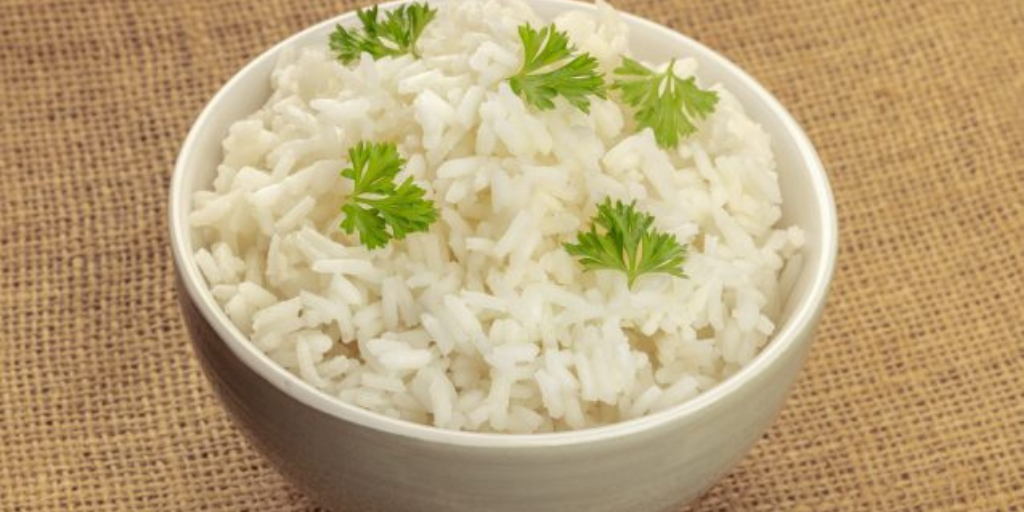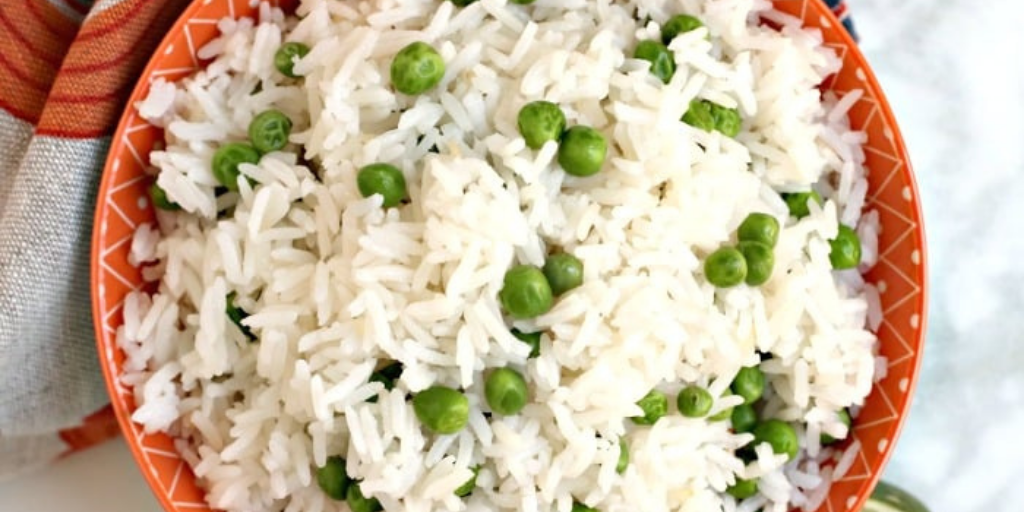Rice is a popular nutritional source in over 100 nations, where it is eaten with various delectable cuisines. Jasmine rice, also known as Thai fragrant rice, is a fragrant “long-grain” rice, with each grain measuring roughly four times its width. Jasmine rice is available in a range of hues. White jasmine rice, in particular, is heavily processed and resembles white Rice nutritionally more than brown jasmine rice. There are three types of jasmine rice: black, purple, and red, each with slightly distinct nutritional profiles. Read the nutrition facts on the jasmine rice you’re cooking for the most accurate nutritional information. Including jasmine rice in your diet has health benefits. However, there are a few dangers to be aware of.
There are various ways to cook jasmine rice, but the most common method involves immersing the Rice in water, bringing it to a boil, and then simmering it for 15 minutes or until all of the water has been absorbed. You should use roughly 1.5 cups of water per cup of Rice as a general rule of thumb, but you can vary based on how soft you want your Rice. Many of your favorite recipes, such as stir-fries, soups, and side dishes, can be made with jasmine rice instead of other varieties of Rice, and it goes well with curries and can also be used as a base for fried Rice or rice bowls.
Jasmine Rice Nutrition Facts
Here’s a table of Jasmine Rice Nutrition Facts, based on 1 tbsp per serving and with Percent Daily Values calculated based on a 2,000-calorie diet:
| Nutrition Facts | Amount Per Serving | % Daily Value* |
| Calories | 52 | 3% |
| Total Fat | 0.2g | 0% |
| Saturated Fat | 0.1g | 0% |
| Trans Fat | 0g | 0% |
| Cholesterol | 0mg | 0% |
| Sodium | 0mg | 0% |
| Total Carbohydrate | 12g | 4% |
| Dietary Fiber | 0.2g | 1% |
| Total Sugars | 0g | – |
| Protein | 1g | 2% |
| Vitamin D | 0mcg | 0% |
| Calcium | 2mg | 0% |
| Iron | 0.2mg | 1% |
| Potassium | 23mg | 0% |
Note: Percent Daily Values are based on a 2,000-calorie diet. Your daily values may be higher or lower depending on your calorie needs.
What Is Jasmine Rice?
Jasmine rice is long-grain Rice with a floral scent and a sticky, soft feel. Because of its sweet and mild flavor, jasmine rice has become a staple worldwide, despite being farmed mainly in Thailand, Cambodia, Vietnam, and Laos.
It’s a little shorter and thicker than other kinds of Rice, like basmati, and has a clinging feel that makes it ideal for eating with chopsticks. The plant’s natural production of aromatic chemicals like 2-acetyl-1-pyrroline also has a distinctive perfume.
This component can be found in various foods, including white bread and basmati rice, and smells like heated buttered popcorn.
Both white and brown jasmine rice are available, as are other forms of Rice. Brown rice is a whole grain that retains all three sections of the rice grain, whereas white Rice has been processed to remove the bran and germ.
Red, purple, and black rice variants are also available from specialty merchants, though less frequent.
Health Benefits Of Jasmine Rice
Jasmine rice is slightly healthier than white Rice, but only when eaten naturally. Jasmine rice that has been processed is quite similar to white Rice. Colored jasmine rice varieties, such as black, red, purple, and brown, can be healthier options. Whole-grain jasmine rice, which comes in various colors ranging from brown to red to black, maybe a healthier alternative to white Rice. This is because they have more fiber, minerals, and beneficial plant chemicals.
1. May Help Maintain Digestive Health
Fiber is abundant in jasmine rice, particularly the brown kind. Dietary fiber intake has been demonstrated in studies to enhance stool frequency in patients with constipation, and it may also aid in maintaining intestinal health.
Furthermore, according to studies, soluble dietary fiber is digested by bacteria in the large intestine, which helps the digestive system function properly by increasing stool size.
2. It May Help Improve Immunity
The colorful varieties of jasmine rice are responsible for the health advantages. According to studies, these colored rice types are high in phytochemicals. Furthermore, even when cooked, these phytochemicals were mainly retained.
According to research, phytochemicals appear to play an essential function in boosting immunity. Other antioxidants found in jasmine rice include anthocyanins, flavones, flavonols, carotenoids, and g–oryzanols. According to research, they play an essential function in boosting immunity.
3. May Offer Additional Antioxidant Benefits
The antioxidant profile of jasmine rice is thought to be quite strong. Free radicals cause oxidative damage, leading to further cellular and tissue damage. Antioxidants, according to research, play a critical role in regulating this process.
According to research, pigmented Rice, such as black or crimson jasmine rice, is also a source of antioxidant chemicals such as flavonoids, tocopherols, and phenols. Antioxidants may also assist in lessening the risk of cancer and heart disease, according to several research.
4. May Promote Heart Health
Because of its high antioxidant content, jasmine rice benefits heart health. Brown jasmine rice extract has been shown to have substantial cardioprotective properties. The antioxidant activity of jasmine rice is thought to be responsible for these cardioprotective properties. However, more research is needed to comprehend this mechanism fully.
5. Is Rich In Fiber
Dietary fiber is abundant in jasmine rice. This type of dietary fiber is essential for general health. Studies have shown dietary fiber to help people lose weight, enhance gastrointestinal motility and insulin sensitivity, and reduce inflammation.
According to other studies, high dietary fiber consumption has also been linked to a lower risk of blood pressure, obesity, and gastrointestinal illnesses such as GERD, duodenal ulcer, diverticulitis, constipation, and serum cholesterol levels. Fiber may also aid in insulin sensitivity improvement.
What Are The Potential Risks of Jasmine Rice?
Even though jasmine rice is a staple diet in many cultures, it is not without risk. The following are some of the risks connected with this Rice:
1. Spikes In Blood Sugar
Jasmine rice, like all Rice, has a relatively high glycemic index. Even brown jasmine rice can increase blood sugar, which is dangerous for persons with Type II diabetes.
2. Levels Of Arsenic
Arsenic is a highly poisonous heavy metal found in soil, rock, and water. Because Rice is produced in water-flooded areas, arsenic accumulates in Rice at ten times the rate it accumulates in other cereals.
The Food and Drug Administration (FDA) does not currently limit how much arsenic may be in foods, which means that arsenic levels can quickly rise without causing harm to the sellers. This is particularly harmful to youngsters. Ensure thoroughly wash your Rice before cooking it to reduce the amount of arsenic.
3. Alternatives That Are Better For You
Alternatives to white jasmine rice include brown and colorful jasmine rice variants. These options, though, aren’t the healthiest grains available. Quinoa, millet, bulgur, and amaranth are some other grains that have reduced arsenic levels while still giving essential nutrients to your body.
How To Make Jasmine Rice Healthy?
Choose red or brown jasmine rice as a healthier alternative to white jasmine rice. The nutritional value of jasmine rice is increased when it is cooked in vegetable/chicken broth rather than plain water. Combine jasmine rice with spices and herbs such as onion, ginger, and garlic to gain advantages.
Pay attention to the size of your portions.
Combine jasmine rice with green leafy vegetables like spinach or amaranth for a unique aroma and added benefits. When eaten in moderation, jasmine rice is generally harmless. Some people, however, may develop adverse side effects. We’ve compiled a list of them below.
Conclusion
Jasmine rice, like basmati rice, includes a chemical called 2-acetyl-1-pyrroline, which gives it its distinctive scent. However, there are significant differences between basmati and jasmine rice in appearance and texture. Essential elements like iron, manganese, folate, and selenium are abundant in organic jasmine rice nutrition facts.
Brown jasmine rice is also high in antioxidants, enhancing heart health, lowering cancer risk, and providing various nutrients necessary for a healthy pregnancy. On the other hand, Rice is abundant in carbohydrates and calories and may contain arsenic. As a result, whole-grain types should be consumed in moderation as part of a healthy diet.

